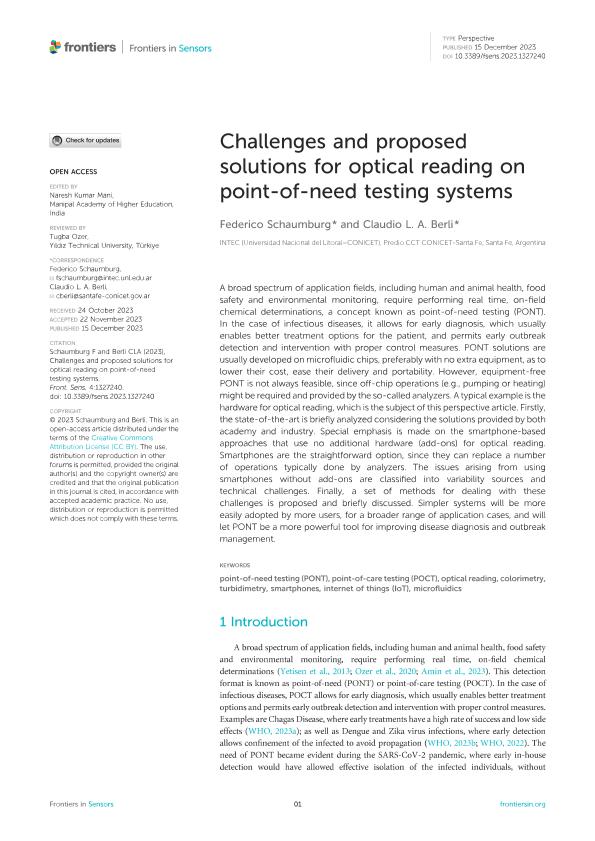Artículo
Challenges and proposed solutions for optical reading on point-of-need testing systems
Fecha de publicación:
12/2023
Editorial:
Frontiers Media
Revista:
Frontiers in Sensors
ISSN:
2673-5067
Idioma:
Inglés
Tipo de recurso:
Artículo publicado
Clasificación temática:
Resumen
A broad spectrum of application fields, including human and animal health, food safety and environmental monitoring, require performing real time, on-field chemical determinations, a concept known as point-of-need testing (PONT). In the case of infectious diseases, it allows for early diagnosis, which usually enables better treatment options for the patient, and permits early outbreak detection and intervention with proper control measures. PONT solutions are usually developed on microfluidic chips, preferably with no extra equipment, as to lower their cost, ease their delivery and portability. However, equipment-free PONT is not always feasible, since off-chip operations (e.g., pumping or heating) might be required and provided by the so-called analyzers. A typical example is the hardware for optical reading, which is the subject of this perspective article. Firstly, the state-of-the-art is briefly analyzed considering the solutions provided by both academy and industry. Special emphasis is made on the smartphone-based approaches that use no additional hardware (add-ons) for optical reading. Smartphones are the straightforward option, since they can replace a number of operations typically done by analyzers. The issues arising from using smartphones without add-ons are classified into variability sources and technical challenges. Finally, a set of methods for dealing with these challenges is proposed and briefly discussed. Simpler systems will be more easily adopted by more users, for a broader range of application cases, and will let PONT be a more powerful tool for improving disease diagnosis and outbreak management.
Archivos asociados
Licencia
Identificadores
Colecciones
Articulos(INTEC)
Articulos de INST.DE DES.TECNOL.PARA LA IND.QUIMICA (I)
Articulos de INST.DE DES.TECNOL.PARA LA IND.QUIMICA (I)
Citación
Schaumburg, Federico; Berli, Claudio Luis Alberto; Challenges and proposed solutions for optical reading on point-of-need testing systems; Frontiers Media; Frontiers in Sensors; 4; 12-2023; 1-7
Compartir
Altmétricas




